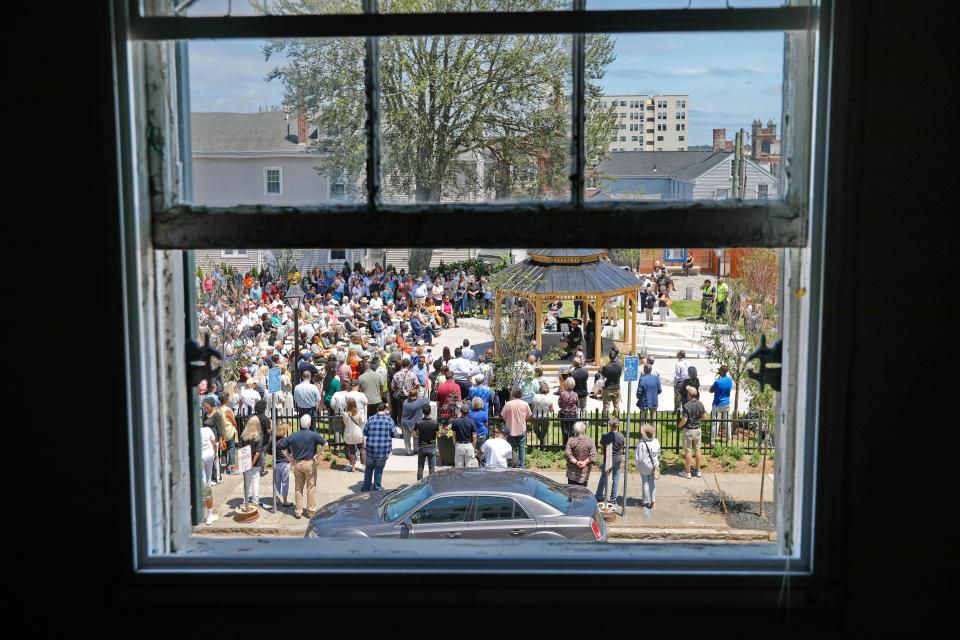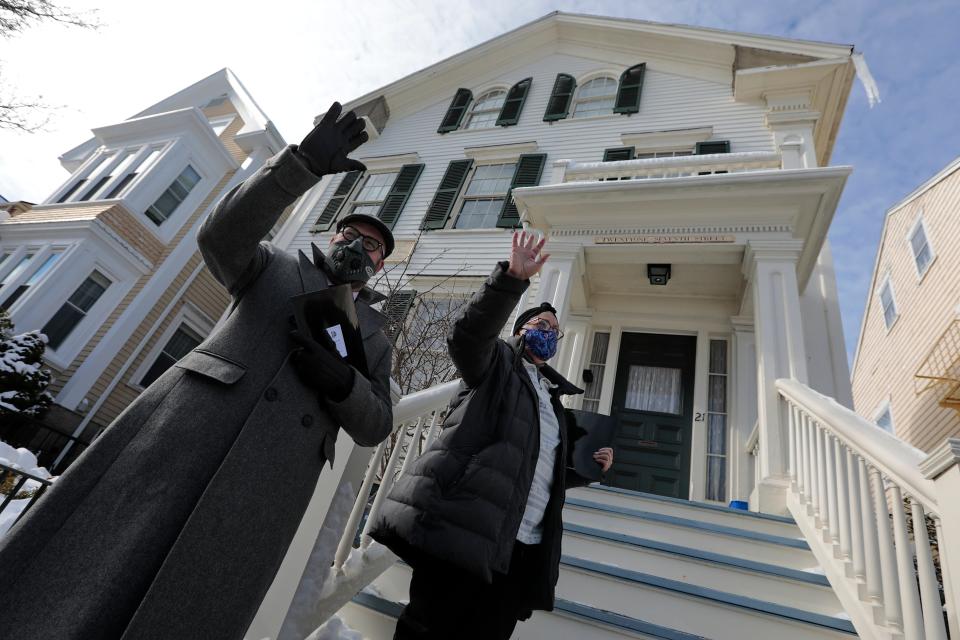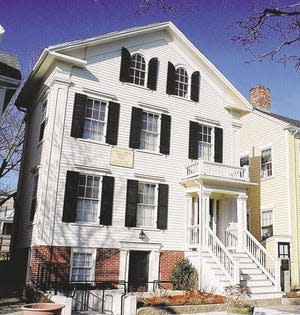Curious Southcoast: How abolitionist Mary 'Polly' Johnson made her mark on New Bedford
- Oops!Something went wrong.Please try again later.
- Oops!Something went wrong.Please try again later.
NEW BEDFORD — Whether they knew her as Mary Johnson or Polly Johnson, freedom seekers passed through her home at 21 Seventh St., in New Bedford.
From the early years of the 19th century until the onset of the Civil War, the Nathan and Polly Johnson House was an important stop on the Underground Railroad thanks to the couple who were well known for their extensive work in the anti-slavery movement.
Theirs was the first safe house where noted abolitionist Frederick Douglass and his wife, Anna, would stay in 1838. The Douglass family ultimately lived in New Bedford for five years, according to the New Bedford Historical Society.

Mary was often called Polly. Inside the home that is now home to the New Bedford Historical Society, history lives on under the direction of the society’s president, Lee Blake, as she and others continue to tell their story from generation to generation.
“When Polly’s husband left New Bedford in 1849 for the California Gold Rush, her hard work allowed her to keep their properties and to continue her abolitionist efforts,” according to an entry from biographical information from the National Park Service and New Bedford Historical Society.
Her biography states that Polly was well-read on the social issues of the time and attended antislavery meetings regularly. She also held her own while her husband was away in California.

Why is the Nathan and Polly Johnson House significant
The Nathan and Polly Johnson House has been recognized as a National Historic Landmark and is a site on the New Bedford Whaling National Historical Park’s Underground Railroad Tour.
As a free black, she first worked as a domestic and then became a business partner with her husband in a confectionery and catering businesses. She also owned two of her own, Polly’s Confectionary Shop at 89 Water St. and later another shop at 23 Seventh St.
Polly specialized in candy, cakes and ice cream. Her confectionery shop sold such items as ginger snaps, candy sticks, Jackson Balls, John Brown’s Bullets, and spruce gum.
Nathan Johnson had been partners in a restaurant with Tobin Thomas T. Robinson, also a man of color, and had been a proprietor of a bathhouse on William Street. In 1840s he operated a dry goods store on William Street and was part owner of the whale ship, Draper.
New Bedford was a welcoming place for freedom seekers due in part to its tolerance of diversity and a spirit of equality in its maritime trades. It is estimated that during the 1850s, the population of black freedom seekers in New Bedford ranged from 300 to 700, according to historical records.

In an article about her granddaughter, Mary Buchanan, that appeared in The New Bedford Sunday Standard, Dec. 15, 1918, the author writes that Johnson was born Mary Mingo in Tiverton, Rhode Island, in 1784, and married Nathan Johnson in 1819.
According to the article, she was known as “Grandma Johnson” and “was famous as a cook and she made and sold cookies in the basement of the Seventh Street house that are said by those who tasted them to have been more perfect than we folks get nowadays.”
The author also writes that “Mrs. Johnson was a woman who had been in France to acquire some of her art as a cook and she was her husband’s chief assistant in making and serving delicacies and in preparing the table decoration.”
Nathan Johnson furnished dinners that were served on the first floor of the second story building next to the Seventh Street house where they lived.
With the income from the properties at 17 and 19 Seventh St., Mary Buchanan set up a scholarship for the education of young men of color, carrying on her grandmother’s legacy.
Standard-Times staff writer Kathryn Gallerani can be reached at kgallerani@gannett.com. Follow her on Twitter: @kgallreporter.
This article originally appeared on Standard-Times: Mary "Polly" Johnson was known to be well-read on social issues

